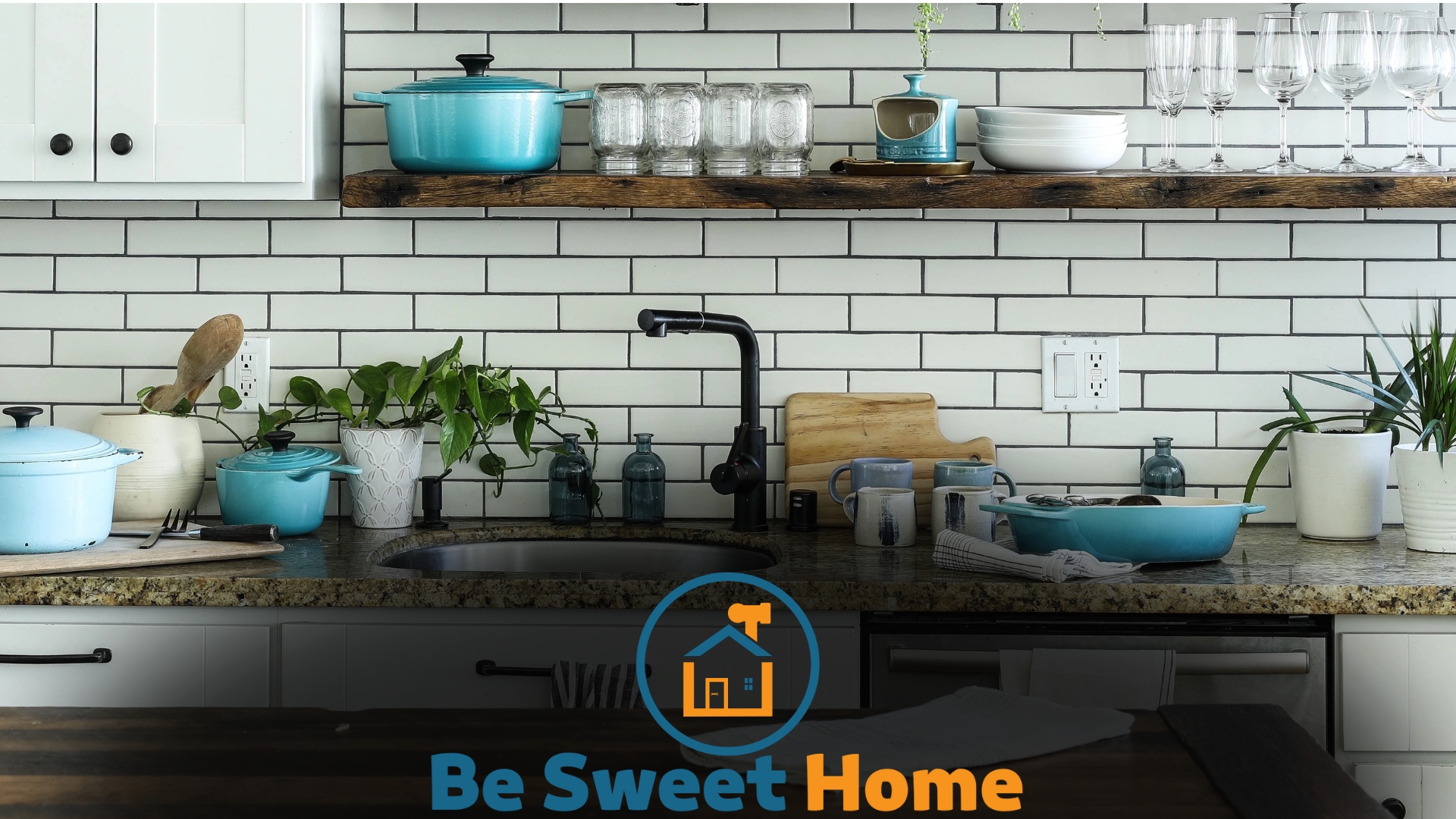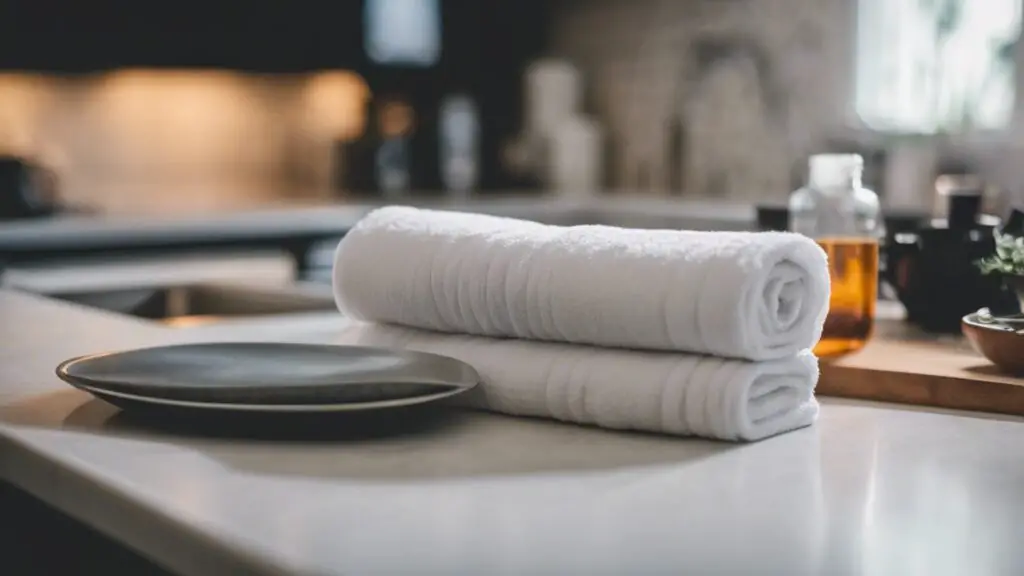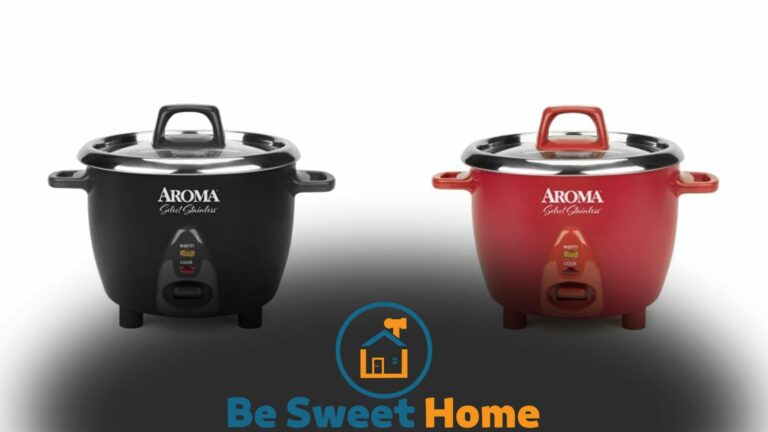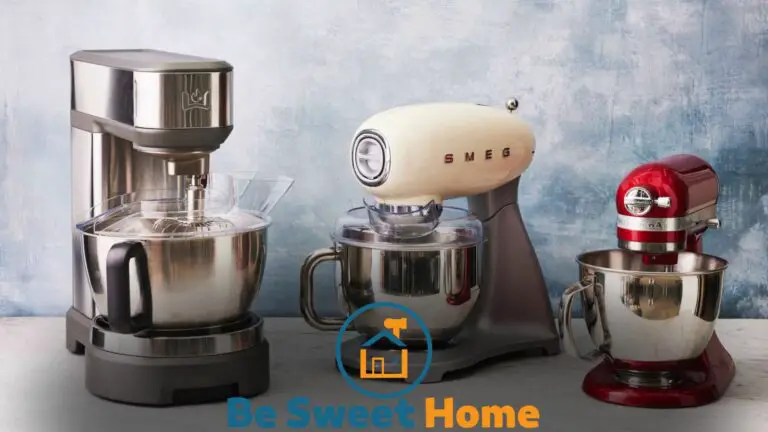

Kitchen towels should be replaced every one to two days. Regular laundering is required to maintain hygiene.
Maintaining cleanliness in the kitchen is essential for a healthy home, and kitchen towels play a pivotal role. These towels, often used for drying hands, utensils, and surfaces, can quickly become hotbeds for bacteria and germs.
A fresh kitchen towel can prevent the transfer of microbes during food preparation, ensuring your culinary space remains sanitary.
Balancing practicality with hygiene is crucial, so staying on top of your towel rotation is key. A consistent replacement routine will minimize the risk of contamination and promote a germ-free kitchen environment.
By keeping a stock of clean towels ready, you can seamlessly swap them out without hassle, contributing to a safe and efficient kitchen routine.
The Importance of Fresh Kitchen Towels
The Importance of Fresh Kitchen Towels can’t be overstated in any household. These unassuming heroes of the kitchen don’t just dry hands or wipe up spills; they’re integral to your kitchen’s overall cleanliness and your family’s health.
Understanding when to replace them is crucial for maintaining a sanitary cooking environment.
Preventing Bacterial Growth
Kitchen towels see a lot of action. Warm, moist environments are breeding grounds for bacteria. That damp towel can harbor E. coli and Salmonella, among other germs.
Fresh towels reduce this risk. Swap out kitchen towels every one to two days, or sooner if they become soiled.
- Wash them at a high temperature.
- Dry towels thoroughly before reuse.
- Use separate towels for hands and dishes.
Maintaining Kitchen Hygiene
Replacing kitchen towels frequently is key to maintaining kitchen hygiene. Fresh towels prevent cross-contamination, which can transfer bacteria from one surface to another.
Ensure you have a rotation of clean towels to keep hygiene levels high.
| Towel Use | Replacement Frequency |
|---|---|
| Drying Hands | Daily |
| Drying Dishes | Every Use or Daily |
| Wiping Surfaces | After Each Use |
Signs Your Kitchen Towels Need Replacing
Kitchen towels are unsung heroes in the home, mopping up spills and drying dishes daily. Like other kitchen tools, they need replacing over time.
Knowing when to let go of an old towel can ensure hygiene and efficiency in your kitchen tasks.
Let’s look at some telltale signs.
Visible Wear and Tear
Day-to-day use gradually wears down your kitchen towels. Look for these signs:
- Thinning fabric — Light shines through when held up.
- Fraying edges — Threads come loose around the borders.
- Holes or tears — Small punctures expand over time.
A towel with such damage won’t perform well and needs replacing.
Persistent Odors Even After Washing
Frequent use can infuse towels with odors. Consider these points:
- Lingering smells — After washing, if the musty or moldy scent persists, it’s time to replace it.
- Multiple washes fail — If repeated washing and air drying don’t refresh the towel, opt for a new one.
Fresh-smelling towels are a must for a clean kitchen.
Ideal Replacement Frequency for Kitchen Towels
Kitchen towels are essential in any cooking space. Their frequent use demands regular evaluation. Knowing when to replace them is key to maintaining a hygienic environment.
This guide will reveal the ideal replacement frequency for kitchen towels to keep your kitchen spotless and safe.
Regular Usage Recommendations
For optimal hygiene, consider these points:
- Change kitchen towels daily if used often.
- After handling raw food, immediately wash or replace the towel.
- Use separate towels for drying hands and dishes.
Keep a rotation of towels to ensure a fresh one is always available.
Considering Towel Material and Durability
Different materials affect how long towels last.
| Material | Durability | Wash Frequency |
|---|---|---|
| Cotton | High | After every use |
| Microfiber | Moderate | 2-3 uses |
| Linen | High | After every use |
Aim to assess towels for wear every 6 months. Replace them when they show signs of thinning or fraying.
Factors That Affect Towel Longevity
Understanding kitchen towel longevity helps to maintain hygiene in the kitchen. Several factors determine how often kitchen towels need replacement.
Knowing these can maximize towel usage while ensuring cleanliness.
Frequency of Use
How often you reach for a kitchen towel impacts its wear and tear. Daily use towels fray faster than those used less often. Consider these points:
- Daily usage towels may need replacement every few weeks.
- Towels used less frequently last longer, possibly several months.
- Keep an eye on signs of aging, like thinning fabric or frayed edges.
Washing and Drying Practices
The way you wash and dry towels is critical. Follow these best practices:
| Washing | Drying |
|---|---|
| Use hot water for eliminating germs. | Avoid high heat that shrinks fibers. |
| Mild detergents prolong fabric life. | Line drying in the sun naturally sanitizes. |
| Avoid bleach to keep colors intact. | Tumble dry on a gentle cycle. |
Adhering to these methods extends towel lifespan and maintains their absorbency and texture.
Choosing the Right Towels for Your Kitchen
When refreshing your kitchen, towels play a vital role. Not only do they dry hands and dishes, but they also contribute to the kitchen’s aesthetic appeal.
Before choosing new kitchen towels, consider their material and functionality to ensure they meet your everyday needs while matching your style. Let’s dive into what makes the perfect kitchen towel.
Material Matters
The right material for your kitchen towels affects durability and feel. Cotton towels often lead the pack in popularity thanks to their softness and strength.
Microfiber options stand out for their lint-free cleaning, while linen towels offer a rustic charm and high resilience. Selecting a towel with a blend of fabrics sometimes yields the best of both worlds: durability and absorbency.
- Cotton: Soft and highly durable
- Microfiber: Lint-free and scratch-resistant
- Linen: Natural feel and long-lasting
Absorbency and Quick Drying Features
Functionality is crucial in a bustling kitchen. Towels must dry quickly to thwart bacteria growth. Hence, seek out towels touted for their super absorbency and rapid drying abilities.
| Material | Absorbency | Drying Speed |
|---|---|---|
| Cotton | High | Medium |
| Microfiber | Very High | Fast |
| Linen | Medium | Fast |
Towels with a waffle weave or terrycloth design hike up absorbency. Look for labels that mention quick-dry features to make an informed decision that ensures a harmonious balance between performance and convenience in your kitchen.
- Check for absorbency in product descriptions.
- Consider waffle weave or terrycloth textures.
- Opt for quick-dry features for hygiene and ease.
Extending the Life of Your Kitchen Towels
Your kitchen towels are hardworking essentials, always there to dry hands and dishes and clean up spills. Keeping them in top shape maintains a hygienic kitchen and saves you money in the long run by avoiding frequent replacements.
With the right care, you can make your kitchen towels last longer. Here are some pro tips on how to extend the lifespan of your beloved kitchen linens.
Proper Cleaning Techniques
Regular laundering is key to kitchen towel longevity. Grease and food particles can quickly build up, creating an environment for bacteria to thrive.
- Wash kitchen towels separately to prevent cross-contamination.
- Use hot water and a good detergent to sanitize thoroughly.
- Bleach white towels occasionally to remove stains and kill germs.
- Avoid fabric softeners, which can reduce absorbency.
- Dry towels completely before folding to prevent mildew.
Storage and Handling Tips
Storing your kitchen towels correctly helps prolong their usability and keeps them fresh.
- Store towels in a cool, dry place.
- Hang wet towels to dry thoroughly between uses.
- Have multiple towels and rotate them to minimize wear.
- Avoid using kitchen towels for heavy-duty cleaning, and delegate tougher jobs to sponges or cloths.
These proper care techniques will make your kitchen towels clean, hygienic, and functional for longer periods.

Frequently Asked Questions
How Often To Change Kitchen Towels?
Kitchen towels should be replaced every one to two days, depending on usage.
What’s the Lifespan of a Kitchen Towel?
The lifespan of a kitchen towel is typically about one year, with regular washing and proper care.
Can Kitchen Towels Harbor Bacteria?
Yes, kitchen towels can harbor bacteria, especially when damp and used frequently without washing.
Best Material for Hygienic Kitchen Towels?
Cotton or linen are the best materials for hygienic kitchen towels as they are absorbent and dry quickly.
Signs Kitchen Towels Need Replacing?
Signs include lingering odors, staining, loss of absorbency, and fraying fabric.
Conclusion
Regular towel replacement is fundamental for kitchen hygiene. Aim to swap dish towels weekly or more often if they’re heavily soiled.
Remember, cleanliness is key to a healthy kitchen environment, and frequent towel refreshment is a simple yet effective step.
Stay vigilant for fabric wear and odor buildup, and make towel rotation a staple in your cleaning routine.







